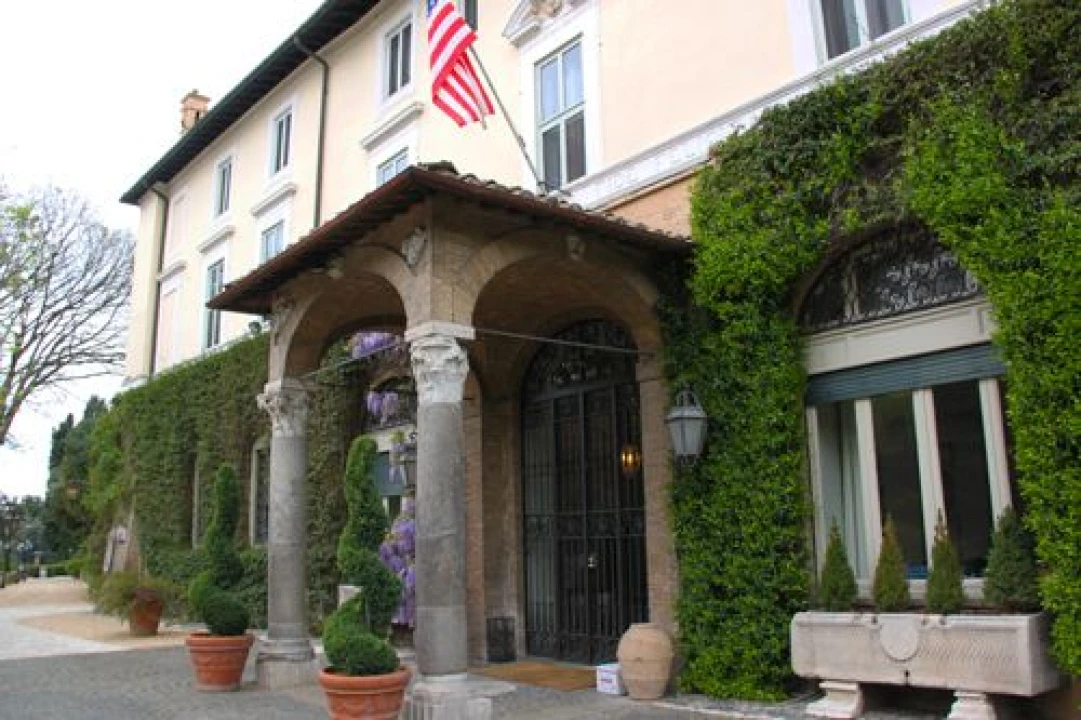Rome, September 19, 2012
The residence of the U.S. Ambassadors to Italy
Benvenuti a tutti e grazie per esser venuti a questa presentazione del volume sulla storia di Villa Taverna. Welcome everyone to Villa Taverna and thank you for joining us today for a presentation about a project that has been very important to me and to my wife Rose. First and foremost, I would like to thank our friends—the National Italian American Foundation, the Bank of Italy, and BNL BNP Paribas Group—without whose support and collaboration this project would not have been possible.
My predecessors and I have all had the honor and privilege to live and serve our country in this magnificent villa whose structure dates to the 16th century. Villa Taverna has served as the residence of United States Ambassadors to Italy since 1933. The political ties between the United States and Italy, however, stretch back much further. Our two countries have a rich history of diplomatic and military relations and cultural and social connections that began with the birth of the United States in 1776.
In more recent history, many important moments in the history of our diplomatic relations have occurred right here at Villa Taverna. The villa's elegant architecture, mix of old masters and contemporary artists, and stunning gardens have created an environment in which political and cultural leaders representing diverse backgrounds and philosophies have been welcomed and brought together to discuss the important issues of our day. We have had the honor of having Italian prime ministers and President Napolitano visit the Villa. In the past, the Villa has played host to our Presidents and other illustrious guests as well—President John F. Kennedy for whom the Villa's pool was built, President Bill Clinton, British Prime Minister Tony Blair, among many others.
Villa Taverna is unique amongst all of the United States' ambassadorial residences because of the site's history. Prior to becoming the residence of U.S. Ambassadors, Villa Taverna housed Italian nobility and a Jesuit seminary, and the grounds of Villa Taverna date back to ancient Roman times. The Villa contains important ancient relics, which are visible on the outer walls around you and throughout the grounds. The book takes all of this rich history into account. It describes the site, Italian and American artistic masterpieces—both old and new, historic gardens, subterranean tunnels, and modernization of the Villa's structure as envisioned by architect Carlo Busiri Vici.
Given the strength and importance of the US-Italy relationship and the uniqueness of this residence, I felt it important to set down in writing an anecdotal history of our bilateral relationship with respect to this particular residence. United States Ambassadors have played a fundamental role in maintaining and strengthening the United States' alliance with Italy. Thus, this book Villa Taverna focuses on the residential history of the villa with special emphasis on the diplomatic history of the residence from 1933 to today.
This was not an academic project nor an in-depth definitive history. Rather it is an expression of the breadth and depth of the Italian-American relationship. It was meant to illuminate US-Italian relations in a way that was accessible to a wide cultural and political audience. It was written to appeal to and engage both Americans and Italians.
There have been both collaborative and difficult moments in our bilateral relationship with Italy, but the bond has always endured and is now stronger than ever. This book is a testament to US-Italy ties. It brings into greater relief this relationship, while placing it in an historical context, something or particular relevance in a country where history is evident on every corner.
By setting the diplomatic history of the Villa in the context of Roman and Italian history, Villa Taverna reinforces the profound connections between the United States and Italy and our two societies.
I would now like to introduce the team who worked to produce this volume.
The author Ingrid Rowland is a Professor in the School of Archaeology at the University of Notre Dame in Rome. She writes and teaches about Classical Antiquity and the Renaissance and Baroque periods.
Mario Guerra, was the photographer. He is based in Paris and also works in Rome and Milan. His work ranges from industrial photography to portraits to creative lifestyle projects.
Francesco Palombi is the editor. His publishing house is particularly well-known in the cultural and art worlds.
I believe the quality of their work speaks for itself.
I would also like to recognize the Embassy team that worked to realize this book: Sandy Polu, Valeria Brunori, Gimena Campos Cervera, and Daniela Masci. I would also like to thank the staff and gardeners of Villa Taverna who every day make this a remarkable residence.



